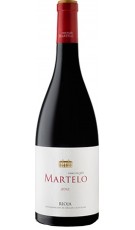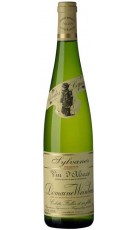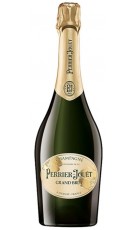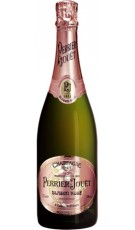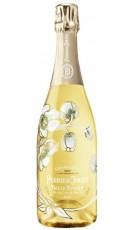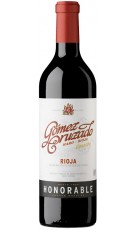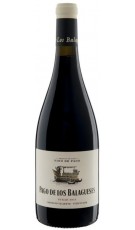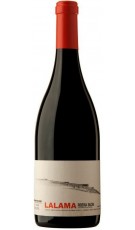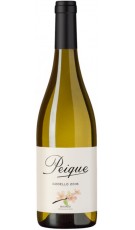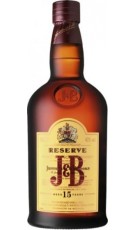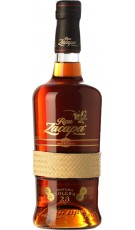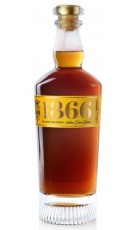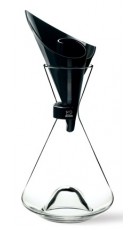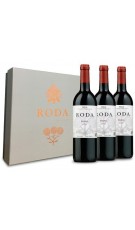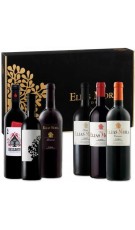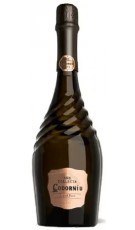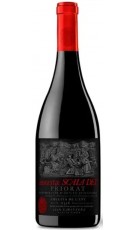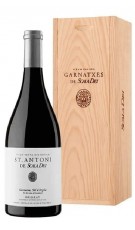
Cataluña There are 262 products.
La vid y el vino fueron introducidos por los griego en el área del Ampurdán. En época de los romanos se desarrolló el comercio de los vinos del Campo de Tarragona y de Alella, en los alrededores de Tarraco y Barcino. Durante el siglo XVIII se extendió la exporta...
Catalog
-
Martinet Bru 2022
Red Wine.MAS MARTINETPrioratMartinet Bru is the door to Priorat. It is a wine of our times, more accessible in every sense. The farms where it comes from are farms that receive the garbinada, a humid, sea breeze that stands...
In stock -
Avgvstvs Chardonnay 2023
White Wine.AVGVSTVS FORVMPenedésAvgvstvs Chardonnay is a great wine that gives us very ripe tropical fruit and small citrus touches on the nose and in the mouth. Its fermentation in French oak barrels gives it slightly toasted...
-
Dominio de la Vega Nº1
Cava Brut ReservaDOMINIO DE LA VEGACavaCava Brut Nature Reserva, aged during 18 months with its lees
-
Clos Martinet 2021
Red Wine.MAS MARTINETPrioratClos Martinet is the Priorat of the 80s. The wine of those who believed in the terroir and dedicated all their efforts to taking care of the process, the form... It is the wine of the generation...
-
Microvinificación Xarel·lo...
White Wine.AVGVSTVS FORVMPenedésWhite wine from an old vineyard with views of the Mediterranean Sea right next to the winery, with this Xarel·lo fermented in French oak barrels we show that with this variety long aging can...
-
Dominio de la Vega Reserva...
Cava Brut ReservaDOMINIO DE LA VEGACavaCava Brut Reserva, aged during 24 months
-
Codorníu Ars Collecta Grand...
Cava.CODORNIUCava2 Review(s)Ars Collecta, the legacy of almost five centuries of oenological know-how. The experience and exhaustive knowledge of our vineyards have allowed us to create this blend of varietals from two...
-
Scala Dei Heretge
Red wine-SCALA DEIHeretge is a single varietal Cariñena that breaks with the "dogma" followed until now by Cellers Scala Dei, where Grenache has always been the hallmark. It is, therefore, a transgressive...
-
Microvinificación Xarel·lo...
White Wine.AVGVSTVS FORVMPenedésWhite wine vinified "in white", this Xarel·lo Vermell from an old vineyard, has been made in an ovoid cement tank, where it has been aged for 6 months on its lees.
-
Scala Dei St. Antoni 2019
Red wine-SCALA DEIScala Dei St. Antoni is a single vineyard wine, one of the oldest vineyards in Scala Dei, which was already worked by Carthusian monks. With it we have recovered a production heritage that had...
-
Microvinificación Xarel·lo...
White Wine.AVGVSTVS FORVMPenedésWhite wine from a century-old vineyard, this wine shows us all the strength and potential of the Xarel·lo variety. Partially vinified in oak barrels, it is then aged on triple lees in an...
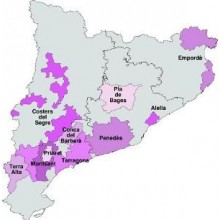
La vid y el vino fueron introducidos por los griego en el área del Ampurdán. En época de los romanos se desarrolló el comercio de los vinos del Campo de Tarragona y de Alella, en los alrededores de Tarraco y Barcino. Durante el siglo XVIII se extendió la exportación. De una parte se exportaba el vino del Ampurdán al Languedoc, y por otra parte se estimuló el cultivo de las comarcas litorales y prelitorales por la exportación a América como vino concentrado en aguardiente. Desde Villanueva y Geltrú se exportaba la producción del Penedés, desde Salou la producción del Baix Camp y del Priorato, y en menor medida desde los puertos de Rosas, Begur, Mataró, Barcelona y Tarragona. A partir del 1865, con la irrupción de la filoxera en Francia, todos los puertos orientaron la exportación al Languedoc y Provenza para atender la gran demanda francesa. Entre los años 1878 y 1900 la filoxera acabó destruyendo toda la viña de Cataluña. La replantación comportó un cambio, pasando la producción máxima del Bages al Penedès, y provocando el despoblamiento del Priorat. La replantación de cepas blancas favoreció el desarrollo del cava. Se crearon las primeras cooperativas vinícolas en Alella, Igualada y Artés, impulsadas por la Mancomunidad de Cataluña. Coincidiendo con el modernismo se construyeron grandes "cellers cooperatius" (bodegas cooperativas), denominados "catedrales del vino", en Barberà de la Conca, Espluga de Francolí, Falset, etc. En Raimat se produjo una experiencia inédita en Europa.

(+34) 91 129 11 11
(+34) 638 458 218
- Brandy
- Cognac
- Gin Premium
- Ron
- Whisky
- Denomination of Origin
- Winery



